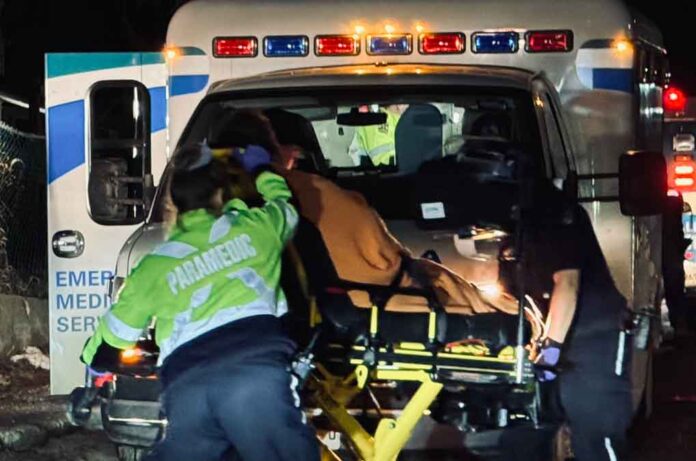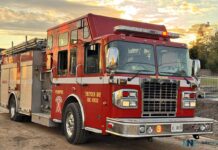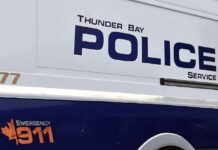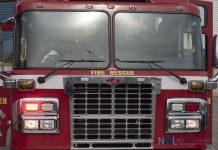THUNDER BAY – NEWS – In a swift response to a critical situation, Thunder Bay Police Service (TBPS) officers and Thunder Bay Fire Rescue along with Superior EMS emergency personnel successfully revived two individuals following suspected drug overdoses.
The incident occurred in a residence located on Tupper Street shortly after 8:15 PM on Thursday, February 8. TBPS officers from the Primary Response Branch arrived at the scene to find two people showing no vital signs.
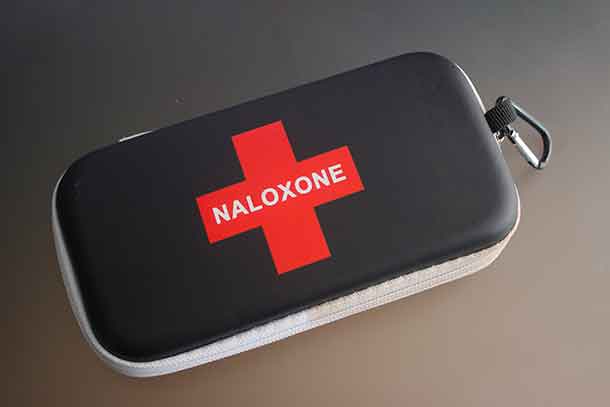
One of the individuals was administered Naloxone, an emergency medication used to reverse the effects of an opioid overdose, by the responding officers. Simultaneously, a bystander provided Naloxone to the second individual, demonstrating the community’s role in addressing overdose situations.
The one individual was revived with the assistance of the 911 operator who talked the good Samaritan through emergency first aid.
Support quickly followed from Superior North EMS paramedics and Thunder Bay Fire Rescue teams, contributing to the lifesaving efforts.
Thanks to the prompt actions of all involved, both individuals regained their pulses and were subsequently transported to the Thunder Bay Regional Health Sciences Centre for further care.
This incident serves as a stark reminder of the inherent dangers associated with narcotics use, particularly those acquired from street sources.
The TBPS continues to warn the community about the unpredictable nature of street narcotics, which often contain unknown substances and dosages.
They strongly advise anyone who has experienced an overdose to seek medical attention, even if they seem to have recovered, to ensure their safety and well-being.
Illicit drug use carries inherent risks, especially with the increasing prevalence of substances like fentanyl and xylazine contaminating street drugs. While the safest approach is to avoid illicit drug use altogether, harm reduction strategies can help protect those who do use.
Here are some practical measures:
- Use in the Presence of Others: Never use drugs alone. If an overdose occurs, having someone nearby can save your life. Ensure at least one person present is equipped to call emergency services and administer first aid or Naloxone if needed.
- Carry and Know How to Use Naloxone: Naloxone can reverse opioid overdoses but not those from non-opioids like xylazine. However, because many street drugs are mixed with opioids, carrying Naloxone (Narcan) and knowing how to use it is crucial.
- Test Substances Before Use: Utilize drug-checking services or test strips to check for the presence of fentanyl, xylazine, or other harmful additives. While not foolproof, these tools can provide an additional layer of safety.
- Start with Smaller Doses: If using a new batch of a substance, start with a smaller dose than usual to test its strength and potential effects. This practice, known as “start low, go slow,” can help mitigate the risk of overdose.
- Adopt Safer Consumption Practices: If possible, opt for safer methods of consumption that reduce the risk of overdose and infection, such as snorting instead of injecting. Always use clean, sterile equipment to minimize the risk of infection and disease transmission.
- Stay Informed: Educate yourself about the substances you’re using, their effects, and the symptoms of overdose. Knowledge of what to do in an emergency can be life-saving.
- Utilize Harm Reduction Services: Engage with local harm reduction services, including safe consumption sites, where available. These services provide a safer environment for drug use under the supervision of trained staff who can intervene in the event of an overdose.
- Download Lifeguard Apps: Consider using apps designed to alert emergency services if you become unresponsive after taking drugs. These apps can call for help even if you’re using alone.
- Be Mindful of Mental Health: Substance use can be linked to underlying mental health issues. Seeking support for mental health concerns can be a critical step in reducing reliance on illicit drugs.
- Seek Support for Substance Use: If you’re considering reducing or stopping your drug use, explore the support and treatment options available. Many communities offer resources ranging from counseling and support groups to medication-assisted treatment.

